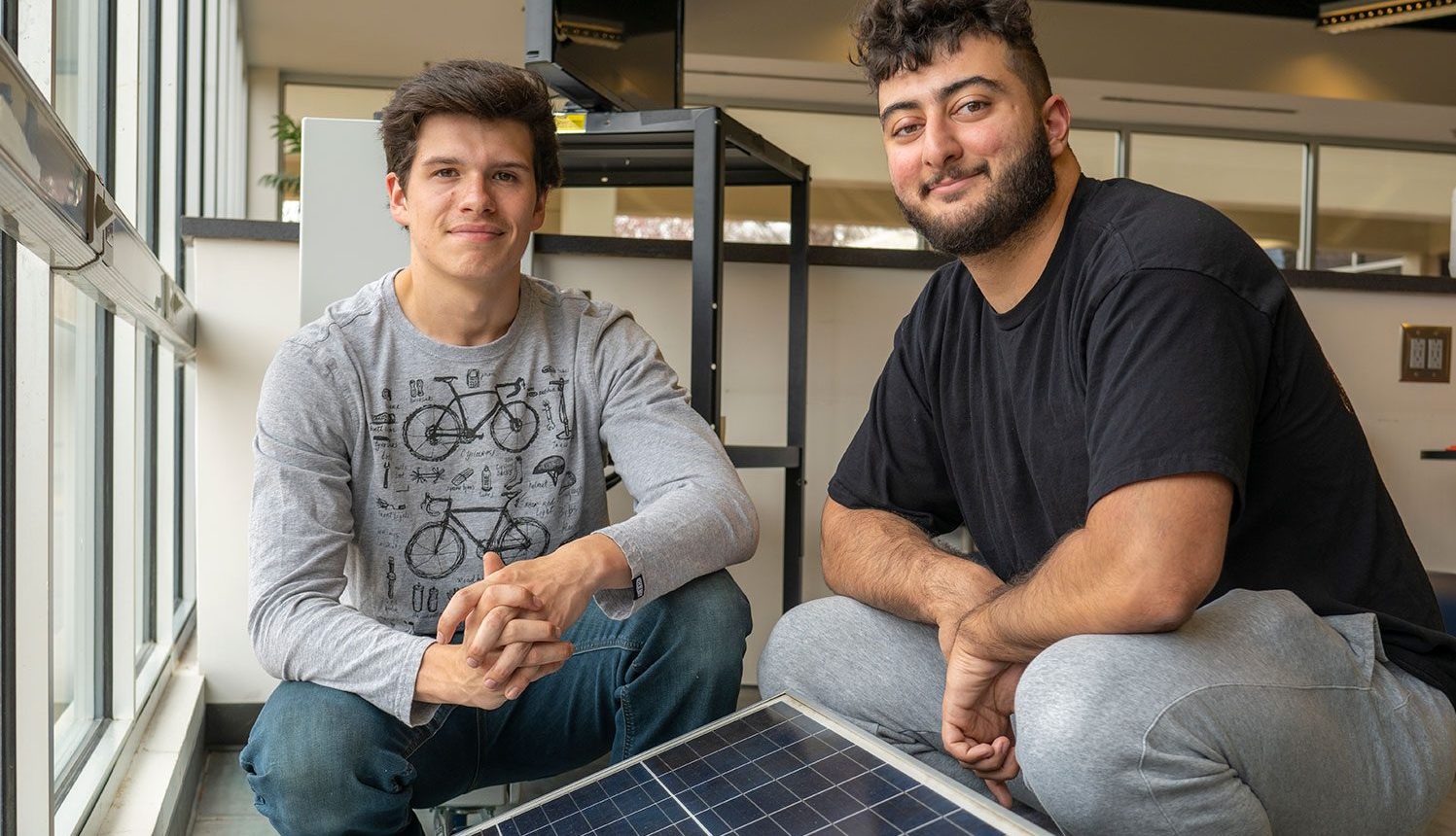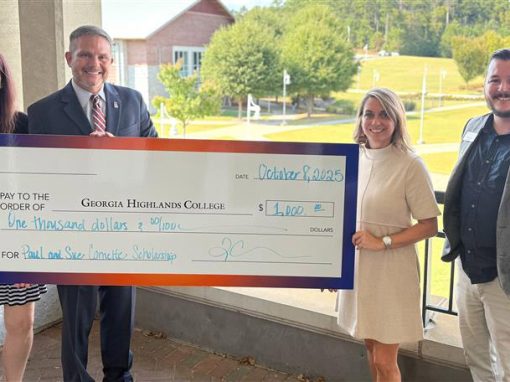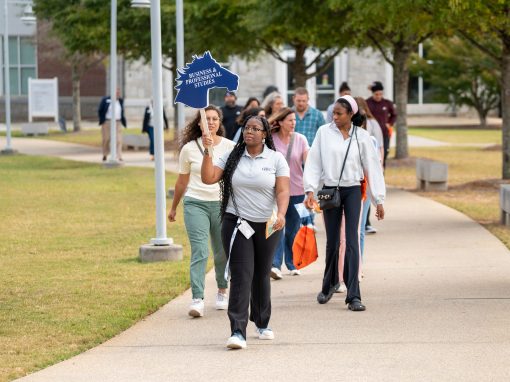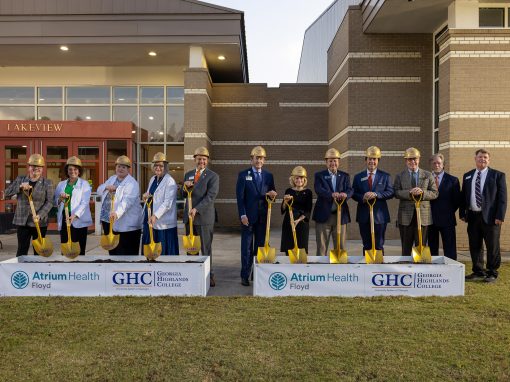Environmental Science 1123 at Georgia Highlands College isn’t your typical science course. In fact, none of the students in the course are science majors. They have all chosen it as an elective. The goal is to immerse students in the scientific method of research, testing, and conveying the results to a wider audience – a goal which Professor Billy Morris says can be applied across multiple disciplines.
And students like Jaysam Odeh agree. He said, “[this class] really opens up your mind.”
Odeh and Spencer Bush decided to see if they could power a 42-inch LCD TV using solar energy for their research in the class. The students installed two 100-watt solar panels facing the rear windows of the Floyd campus’ student center.
“Solar power really is the future,” Odeh said. “A lot of people are starting to use solar panels now at their homes and businesses, so we wanted to see how much energy you can get from solar panels.”
Each Wednesday at 2 PM, Bush and Odeh would check the equipment’s battery level, would let the TV run, and see how long it would last. The end result was seven hours of power.
“It’s really cool to see it all come to fruition and that energy from the sun is powering a TV,” Odeh said.
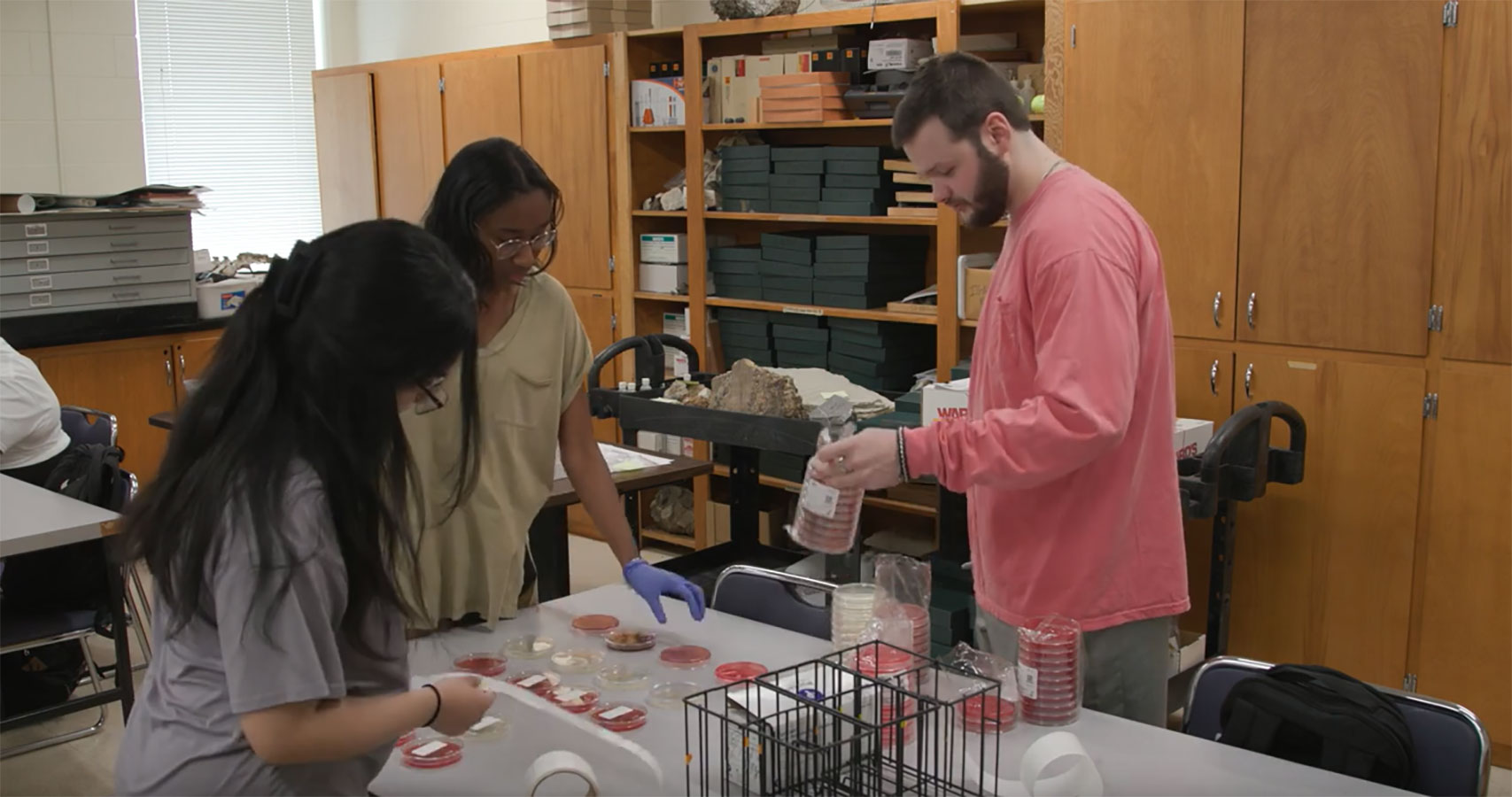
Logan Yarborough, Katrice Ferrell and Yaney Reyes wanted to determine if hardware store materials can effectively filter bacteria from indoor air. To find the answer, the students built four air filters using a box fan, air filters and cardboard, and then placed the fans around various buildings and the busiest classrooms on the Floyd Campus.
The results showed these hardware store materials can effectively filter bacteria from the air. After weeks of swabbing and testing the air filters for bacteria, the students did see growth in the filters, but none that could cause serious harm. In addition, little bacteria growth was found on the exhaust on the exhaust side of the filter.
The students said the filters take a minimum of 10 minutes to assemble with minimal effort. From there, they began testing the filters.
“After about three weeks of swabbing we finally began seeing results, and by week four, we put the bacteria under a microscope and were able to observe it and determine the type of bacteria,” Yarborough said.
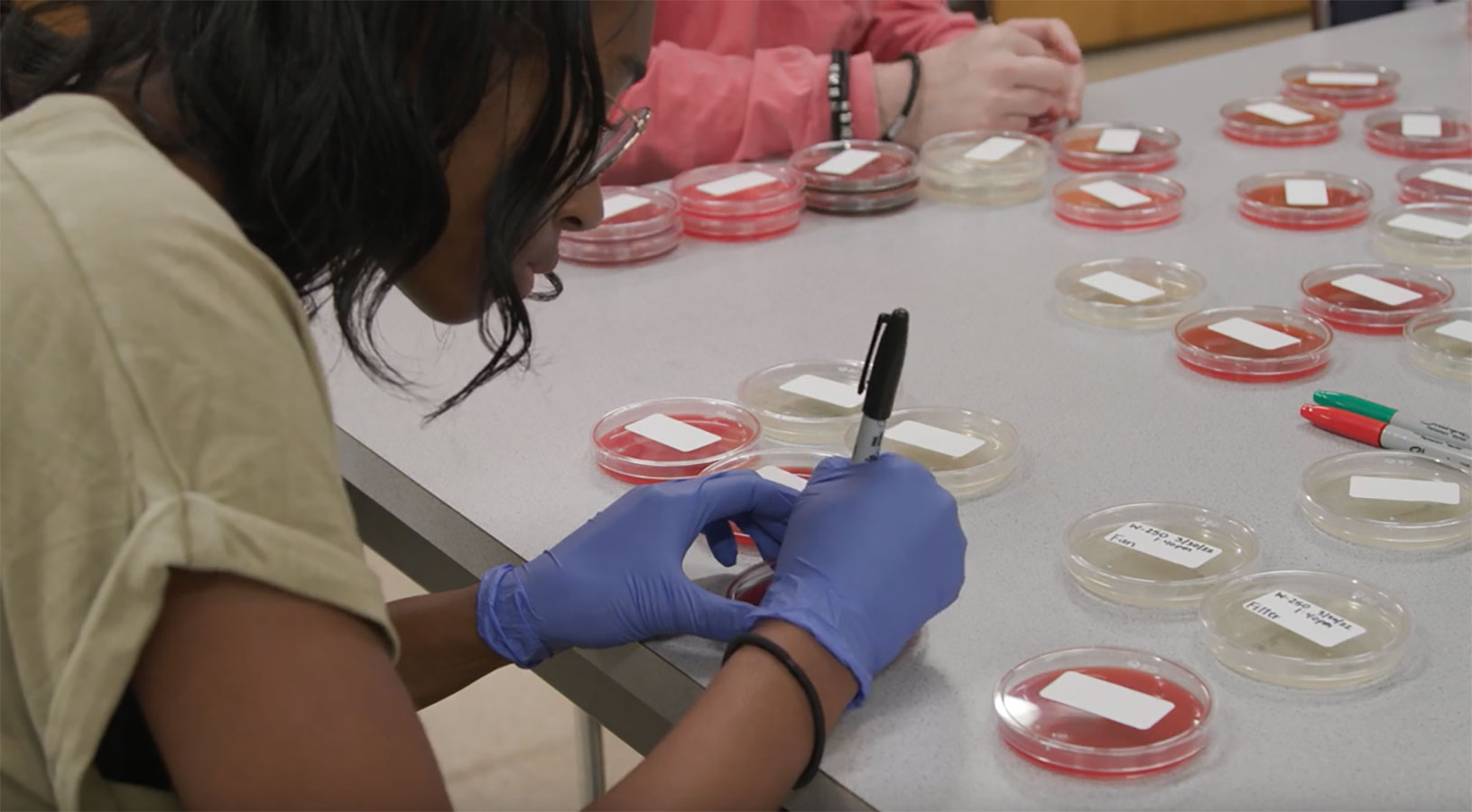
The group found rhizoid, which is a non-harmful filamentous outgrowth or root hair found in lower plants, such as mosses and liverworts.
“It looks gross and you’re breathing it in, but it’s nothing to worry about,” Yarborough said.
While the group said they enjoyed working on the project, it also granted them greater insight as to what is in our air and the time and effort required to complete such research.
Other projects included river water quality testing, drinking water or tap water quality, and studies on insects.
